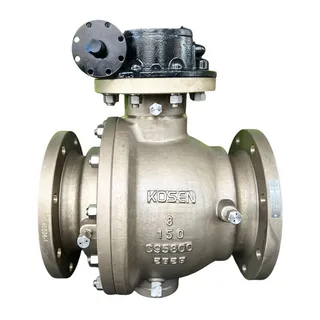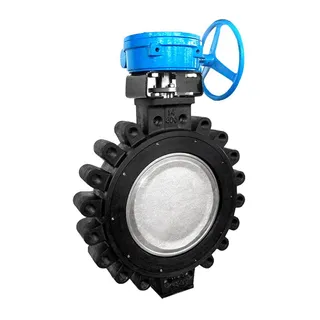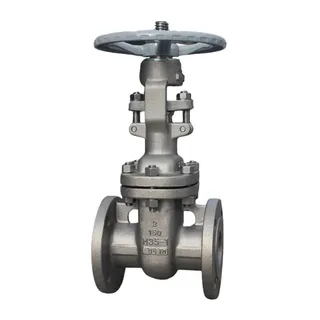In industrial production, the purity of fluids is crucial to the stability of the entire production process and the quality of the final products. Whether in the chemical, petroleum, pharmaceutical, or food industries, effective filtration equipment is required to remove impurities from fluids, ensure normal operation of equipment, and improve product quality. As two common types of industrial filtration equipment, basket strainers and Y-type strainers each have unique structural and performance characteristics, suitable for different application scenarios. This article will provide a detailed introduction to the working principles, advantages, disadvantages, and applications of these two pipe strainers to help you select the right filtration equipment.
The basket strainer is a highly efficient filtration device, mainly composed of a housing, a basket-shaped filter screen, inlet and outlet flanges, and other components. The filter screen is basket-shaped and installed inside the housing. When the fluid enters the housing through the inlet, it passes through the fine filter mesh, which intercepts impurities inside the filter screen, while the clean fluid passes through the mesh and flows smoothly into the outlet pipeline. This unique basket-shaped mesh structure provides a large filtration area that can accommodate more impurities, making the basket strainer particularly effective in handling fluids with a high impurity content.
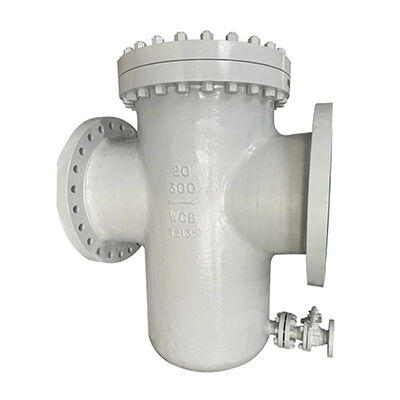
High Filtration Precision: The filter screen of the basket strainer is usually made of high-molecular sintered PE or PA filter elements, which can effectively capture small impurity particles and ensure high fluid purity. This is particularly important for industries such as fine chemicals and pharmaceuticals that require strict fluid purity.
Large Impurity Capacity: Because the filter screen is basket-shaped with a large internal space, it can hold more impurities, reducing the need for frequent cleaning. This makes it especially suitable for fluid systems containing high impurity levels.
Compact Structure and Small Footprint: Despite its large filtration area, the overall design of the basket strainer is compact and small in size. It does not occupy much space and is ideal for installation in large industrial pipeline systems.
Higher Flow Resistance: The complex structure of the basket strainer causes higher resistance as the fluid passes through, especially when impurities accumulate. This can lead to a noticeable pressure drop in the system, potentially affecting overall efficiency.
Relatively Complicated Cleaning and Maintenance: Although the filter screen can be disassembled for cleaning, its complex structure may require more time and effort during the cleaning and maintenance process.
Due to their high filtration efficiency and large impurity capacity, basket strainers are widely used in industries such as chemicals, petroleum, and pharmaceuticals, where fluid purity requirements are high. For example, in fine chemical production processes, basket strainers can effectively remove impurities from raw materials to ensure product quality. In oilfield gathering and transportation systems, they can capture solid impurities in the fluid, extend equipment service life, and ensure stable system operation.
The Y-type strainer is named for its Y-shaped structure. It mainly consists of an inlet pipe, an outlet pipe, a strainer body, and a conical filter screen. When fluid enters the inlet, it flows along the outer wall of the conical filter screen, where impurities are intercepted, and the clean fluid flows from the inside of the filter screen toward the outlet pipe. The conical filter design allows the fluid to form a certain velocity and directional change during the filtration process, helping to improve filtration efficiency.
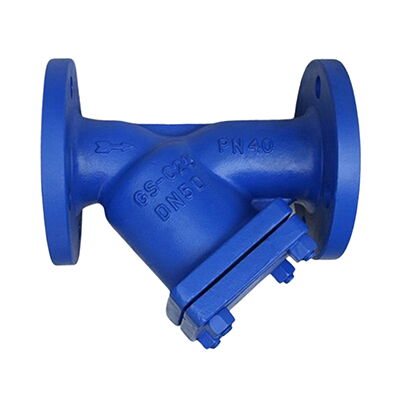
Low Flow Resistance: The Y-type strainer has a relatively simple structure, allowing the fluid to flow smoothly within the strainer and thus maintaining low resistance. This makes it particularly effective in situations where low pressure loss is required, helping to reduce energy consumption.
Convenient Installation and Maintenance: Due to its small size and simple structure, the installation and maintenance of the Y-type strainer are very convenient. The filter screen can be easily removed and cleaned, greatly reducing maintenance time and cost.
Wide Range of Applications: The Y-type strainer is suitable for various raw water qualities and water usage requirements. It is widely used in both industrial and civil pipeline systems, such as water supply and drainage systems, air-conditioning systems, and heating systems. In environments where impurity content is relatively low, the Y-type strainer is an ideal choice.
Small Filtration Area: Compared with basket strainers, the Y-type strainer has a smaller filtration area and limited impurity capacity. In high-impurity environments, it may require more frequent cleaning to maintain optimal filtration performance.
Limited Filtration Precision: Although the Y-type strainer can effectively remove larger impurity particles, it may not meet the high filtration precision required in applications that demand extremely pure fluids.
Due to its simple structure, convenient installation and cleaning, and good impurity-holding capacity, the Y-type strainer is increasingly favored by users. It plays an important role in clean water applications, especially in microfiltration systems requiring higher water quality. For example, in residential water supply systems or general air-conditioning chilled water systems, Y-type strainers can effectively remove impurities from fluids, protect downstream equipment, and ensure stable water quality.
Although both basket strainers and Y-type strainers are widely used in industrial fluid filtration, there are significant differences between them. To help users make the right selection according to their specific needs, the following section presents a detailed comparison of the two types.
Filtration Precision: Basket strainers provide higher filtration precision and can effectively trap smaller impurity particles, making them suitable for applications requiring high fluid purity. Y-type strainers, on the other hand, offer relatively lower filtration precision and are suitable for removing larger impurities.
Impurity Capacity: Due to their larger filtration area and basket-shaped mesh, basket strainers can accommodate more impurities, reducing cleaning frequency. Y-type strainers have a smaller impurity capacity and require more frequent cleaning in high-impurity environments.
Filtration Area: Basket strainers offer a larger filtration area and thus higher efficiency, while Y-type strainers, with their simpler structure, allow smoother fluid flow and lower resistance.
Structural Complexity: Basket strainers have a more complex structure composed of multiple parts, requiring certain technical knowledge and time for installation and maintenance. Y-type strainers are simpler and more compact, making them easy to install and maintain—ideal for areas with limited space.
Maintenance Cost: Cleaning and maintenance of basket strainers are relatively complex and time-consuming, resulting in higher maintenance costs. Y-type strainers have lower maintenance costs because their filter screens are easy to remove and clean.
Basket Strainers: Suitable for industries such as chemicals, petroleum, and pharmaceuticals, where high fluid purity is required—such as in fine chemical production or raw material filtration in pharmaceutical processes. In large industrial pipeline systems with high impurity content and continuous operation, basket strainers demonstrate clear advantages.
Y-Type Strainers: Widely used in industrial and civil pipeline systems such as water supply, air-conditioning, and heating systems. In environments with lower impurity content and where low pressure loss is important, Y-type strainers are the preferred option.
When selecting between a basket strainer and a Y-type strainer, several factors should be considered:
Impurity Content: If the fluid contains a high level of impurities, a basket strainer is recommended due to its large impurity capacity and high filtration precision. If impurity content is low, a Y-type strainer is a more economical and convenient choice.
Fluid Properties: Different fluids have varying requirements for filter materials and structures. For corrosive fluids, materials with high corrosion resistance should be selected.
Pressure Loss: When low pressure loss is a critical requirement, a Y-type strainer is the better choice due to its lower resistance, which helps reduce energy consumption. If pressure loss is less of a concern, a basket strainer provides better filtration performance and impurity retention.
Space Limitations: In confined spaces, the compact structure of the Y-type strainer provides an advantage. In large industrial pipeline systems, the high filtration efficiency of basket strainers can be better utilized.
Ease of Maintenance: If minimizing maintenance time and cost is a priority, the simple structure and easy cleaning of the Y-type strainer should be considered. If high filtration precision and impurity capacity are required, the basket strainer, though more complex, offers superior performance.
Economic Considerations: Purchase, installation, and maintenance costs should all be considered. Generally, Y-type strainers have lower initial investment and maintenance costs, while basket strainers, despite their higher initial cost, can reduce long-term maintenance expenses through higher efficiency.
Both basket strainers and Y-type strainers are indispensable components in industrial fluid filtration systems. Each has its unique structure and performance characteristics suited for different application scenarios. Basket strainers, with their high filtration precision, large impurity capacity, and wide filtration area, perform exceptionally well in industries such as chemicals, petroleum, and pharmaceuticals, where fluid purity is critical. In contrast, Y-type strainers, with their simple structure, low resistance, and easy installation and maintenance, are widely used in various industrial and civil pipeline systems.
When selecting a strainer, it is important to consider factors such as fluid characteristics, specific system requirements, maintenance convenience, and cost. Only by choosing the appropriate strainer can stable system operation be ensured, production efficiency improved, product quality guaranteed, and maintenance costs reduced. This article aims to help you better understand the characteristics and applications of basket and Y-type strainers, providing valuable guidance for your industrial filtration needs.

